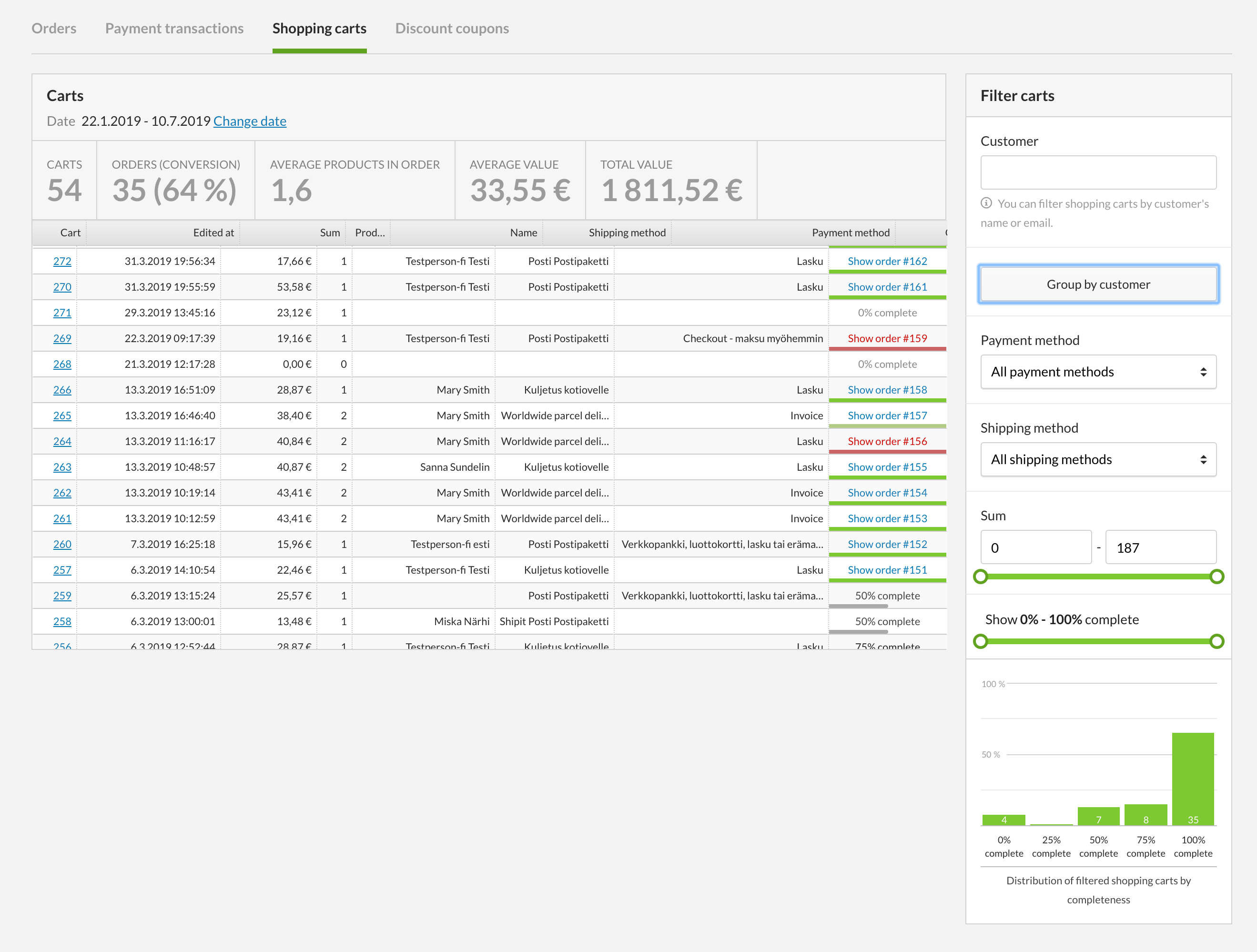All shopping carts that are created in your online store are stored on the admin panel's page, including abandoned shopping carts.

Stored shopping carts enable you to track your online store's conversions; i.e. the conversion of visitors to customers.
The shopping cart in your online store's customer area
The products that the customer adds to the shopping cart are cached (saved) by using cookies. If the customer leaves your online store before placing an order, the products will still be in the shopping cart when the customer returns to your store. If the customer clears the browser's cache, the shopping cart will be emptied.
Check out the Cart Recovery extension, thanks to which you can send automatic reminders to customers if they leave your store without finalizing their orders.
Browsing and searching shopping carts
By default, the listing on the page shows all shopping carts that have been created in your online store, starting with the newest ones.
In the search tool in the right-hand pane, you can filter and group shopping carts according to different criteria:
- You can group shopping carts by customer. In this way you can display all shopping carts in expandable lists with customer email addresses as their titles.

- You can also filter shopping carts according to payment and shipping methods. In such cases, only shopping carts that match your search criteria will be displayed.
- You can also search for shopping carts whose total amounts fall within a defined scope. By default, MyCashflow suggests the total amount for the most expensive shopping cart as being the maximum amount.
To adjust the range, use the price range slider.
You can also filter shopping carts according to their completion percentage. This may offer useful information on the stage at which visitors usually abandon their shopping carts:- 0% = The customer added products to the shopping cart but didn't proceed to checkout.
- 25% = The customer filled in the customer details or selected a payment method or
- logged in, which means that the customer details would be filled in at checkout automatically.
- 50% = The customer filled in the customer details and selected a payment method or shipping method.
- 75% = The customer filled in all the information at checkout but didn't confirm the order for some reason.
The obstacles that occur at this stage may be connected to the payment service (e.g. online bank outages).
- 100% = The order was placed.
In versions that use Klarna Checkout, simply adding products to the shopping cart means that:- The completion percentage of a logged-in customer or a customer recognized by Klarna is always going to be 50% (because the customer details and payment method are known).
- If the customer has ordered from the store before, the checkout will automatically suggest the previously used shipping method (if it is still available in the online store), which means that the shopping cart's completion percentage will be 75%.
Viewing shopping cart details

In the shopping cart view, you can see the most important shopping cart details:
Left-hand column
- Shopping cart creation and edit dates
- Customer information
- Order number (optional, only if an order was placed)
- A payment transaction related to the shopping cart (optional)
Right-hand column
- Shopping cart products and product payment statuses




